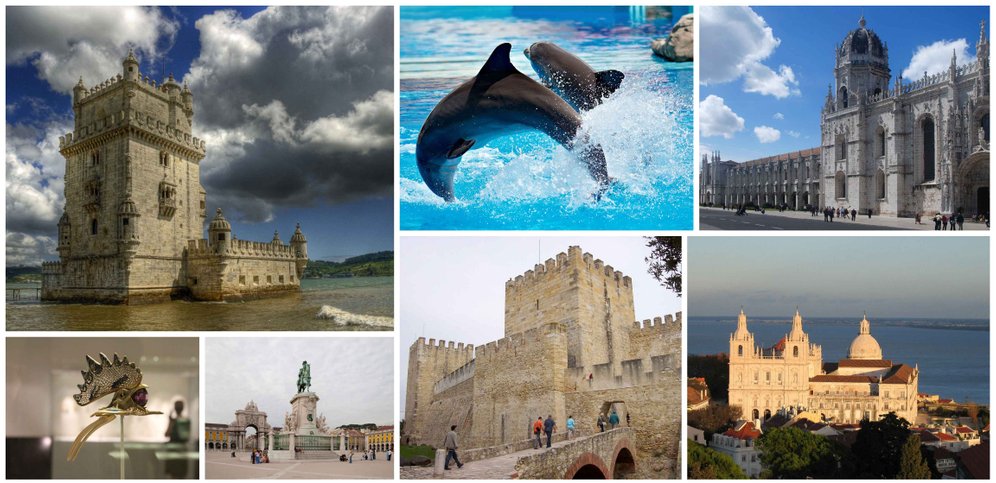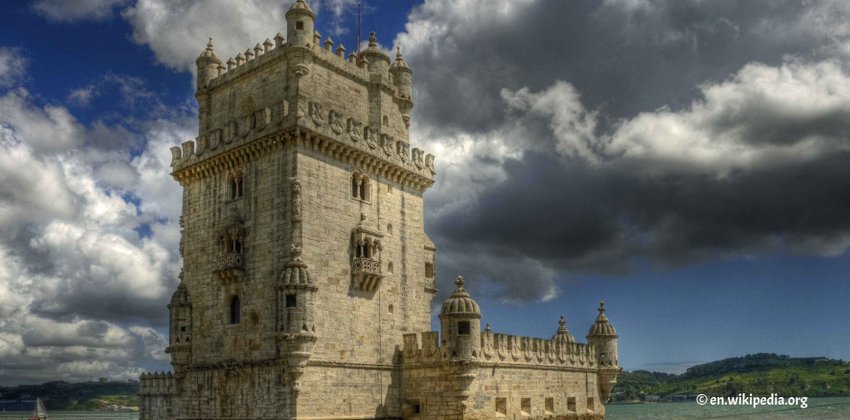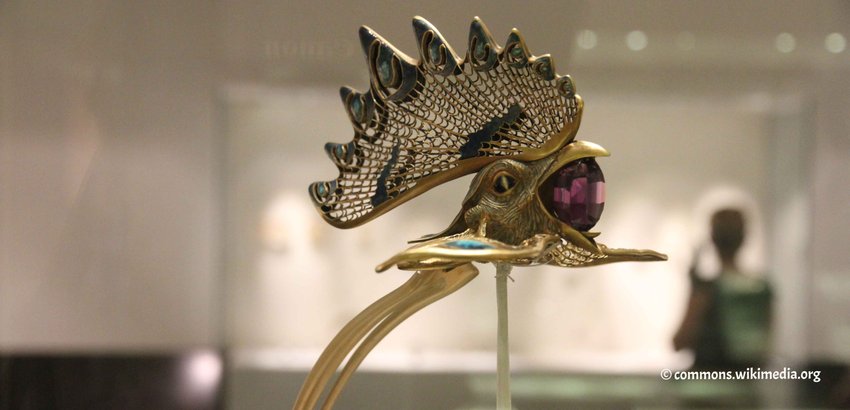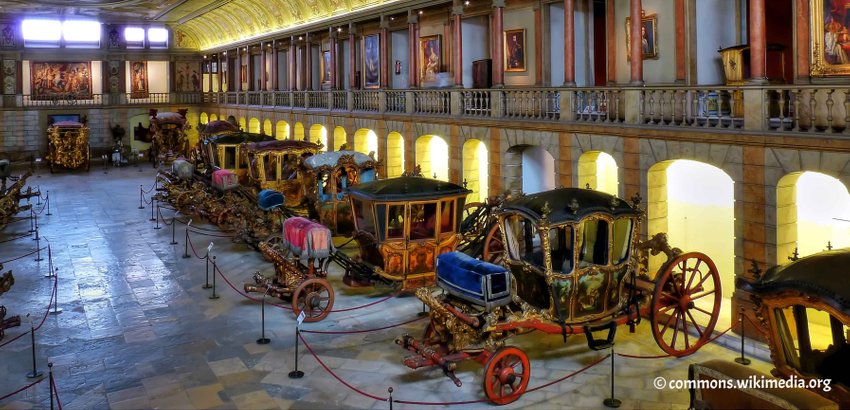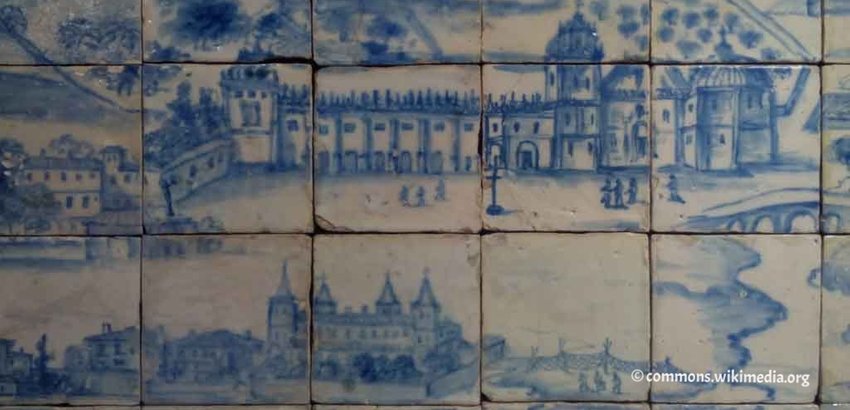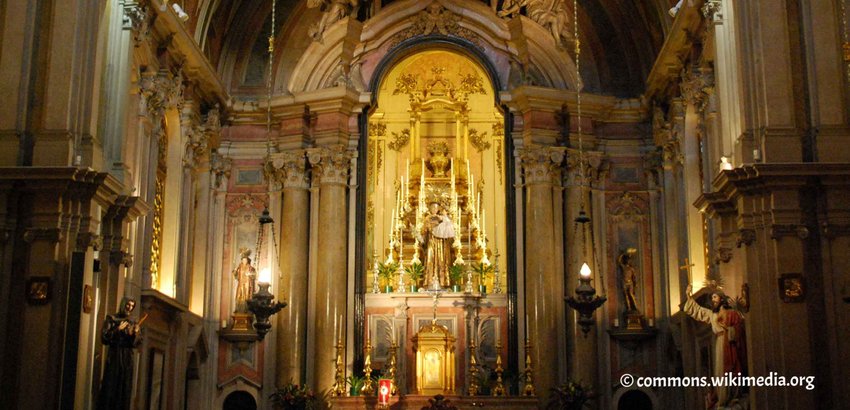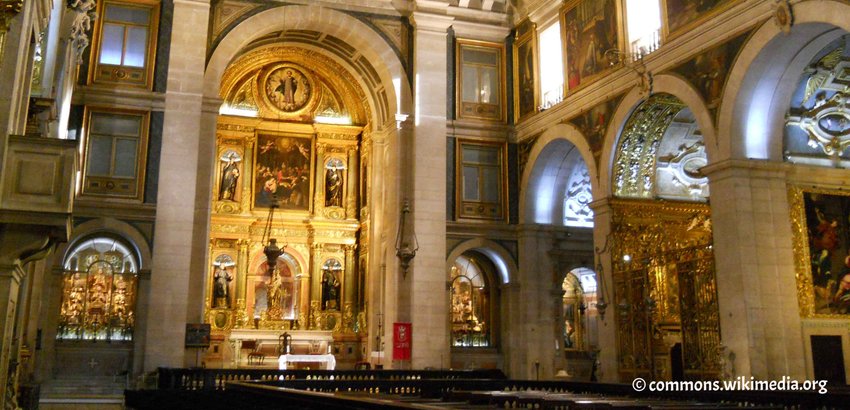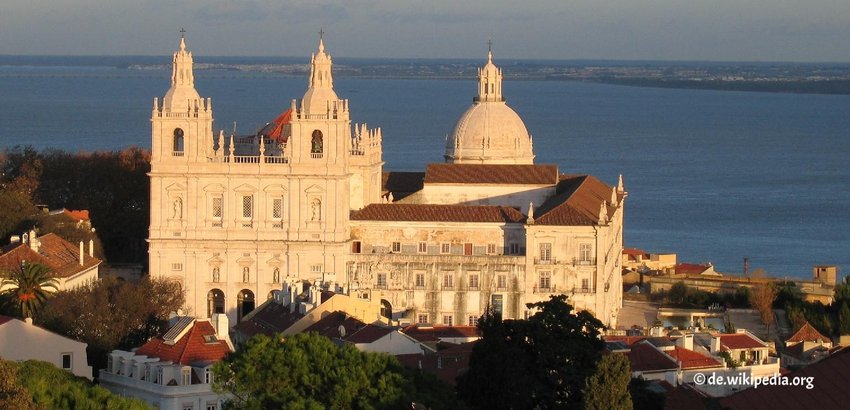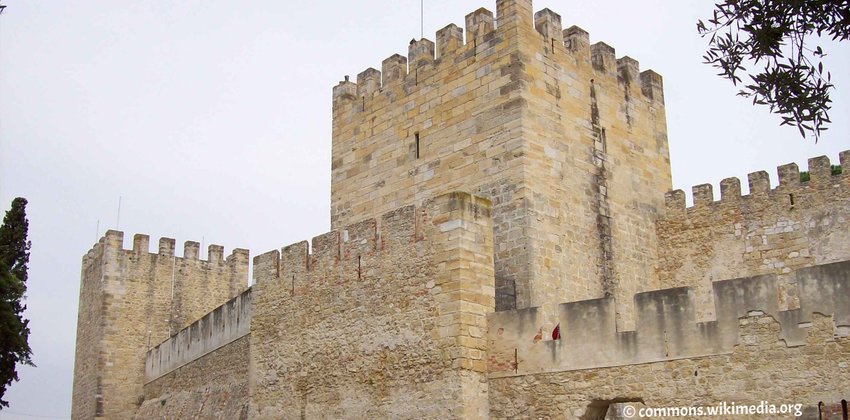Lisbon
Lisbon is the capital city of Portugal and is also the largest city▪️ It is the westernmost large city located in continental Europe, as well as its westernmost capital city and the only one along the Atlantic coast▪️
Lisbon lies in the western Iberian Peninsula on the Atlantic Ocean and the River Tagus. You can buy our complete Lisbon City Guide on Apple Store or Google Play Store▪️
Most popular places to visit in Lisbon are:
Belém Tower
Belém Tower also known as Torre de Belém or Tower of St Vincent, is a fortified tower located in the civil parish of Santa Maria de Belém in the municipality of Lisbon▪️
It is a UNESCO World Heritage Site because of the significant role it played in the Portuguese maritime discoveries of the era of the Age of Discoveries▪️ The tower was commissioned by King John II to be part of a defense system at the mouth of the Tagus river and a ceremonial gateway to Lisbon▪️
Address: Avenida Brasília, 1400-038 Lisboa
Reach:
Tram: 15E (Pedrouços)
Bus: 729 (Pedrouços)
Opening Hours:
Oct - Apr:
Tue - Sun: 10:00 - 17:30
Mon: Closed
May - Sep:
Tue - Sun: 10:00 - 18:30
Mon: Closed
Entrance Fee:
Adults: 6 €
Children (upto 12 years): Free
Website: www.torrebelem.gov.pt
Gulbenkian Calouste Museum
Museum Calouste Gulbenkian also known as Calouste Gulbenkian Museum, is a museum in Lisbon, containing a collection of ancient, and some modern art▪️
The museum was founded according to Calouste Gulbenkian's last will, in order to accommodate and display Gulbenkian's art collection belonging now to the Calouste Gulbenkian Foundation▪️
Address: Avenida Berna 45 A, 1067-001 Lisboa
Reach:
Metro: Azul, Vermelha (São Sebastião)
Bus: 716, 726, 756 (Praça de Espanha-av. de Berna)
Opening Hours:
Mon - Sun: 10:00 - 18:00
Tue: Closed
Entrance Fee:
Adults: 5 €
Children (under 12 years): Free
Website: www.gulbenkian.pt
Jerónimos Monastery
The Jerónimos Monastery also known as Hieronymites Monastery or Mosteiro dos Jerónimos, is located near the shore of the parish of Belém, in the Lisbon Municipality▪️
The monastery is one of the most prominent examples of the Portuguese Late Gothic Manueline style of architecture in Lisbon▪️ It was classified a UNESCO World Heritage Site, along with the nearby Tower of Belém, in 1983▪️
Address: Praça do Império, 1400-206 Lisboa
Reach:
Tram: 15E (Belém-Jerónimos)
Bus: 201, 714, 727, 728, 729, 751 (Belém-Jerónimos)
Opening Hours:
Oct - Apr:
Tue - Sun: 10:00 - 17:30
Mon: Closed
May - Sep:
Tue - Sun: 10:00 - 18:30
Mon: Closed
Entrance Fee:
Adults: 10 €
Children (upto 12 years): Free
Website: www.mosteirojeronimos.gov.pt
Lisbon Oceanarium
The Lisbon Oceanarium also known as Oceanário de Lisboa, located in the Parque das Nações, which was the exhibition grounds for the Expo '98. It is the largest indoor aquarium in Europe.
The Lisbon Oceanarium has a large collection of marine species — penguins, seagulls and other birds; sea otters (mammals); sharks, rays, chimaeras, seahorses and other bony fish; crustaceans; starfish, sea urchins and other echinoderms; sea anemones, corals and other cnidaria; octopuses, cuttlefish, sea snails and other mollusks; amphibians; jellyfish; marine plants and terrestrial plants and other marine organisms totaling about 16,000 individuals of 450 species.
Address: Esplanada D. Carlos I - Doca dos Olivais, 1990-005 Lisboa
Reach: Bus: 400, 728 (Oceanário de Lisboa)
Opening Hours:
Summer:
Mon - Sun: 10:00 - 20:00
Winter:
Mon - Sun: 10:00 - 19:00
Entrance Fee
Adults (13-64 years): 16.20 €
Children (4-12 years): 10.80 €
Children (upto 3 years): Free
Website: www.oceanario.pt
Lisbon Zoo
Lisbon Zoo also known as Jardim Zoologico de Lisboa, is a zoological garden in Lisbon. It was founded in 1884.
It has about 2,000 animals of more than 300 species. The mission of the Lisbon Zoo includes the conservation and breeding of endangered species, as well as scientific research, and educational and recreational activities.
Address: Praça Marechal Humberto Delgado, 1549-004 Lisboa
Reach:
Metro: Azul (Jardim Zoológico)
Bus: 202, 716, 746, 754, 758, 768 (Estrada de Benfica - Furnas)
Opening Hours:
21st Mar - 20th Sep:
Mon - Sun: 10:00 - 20:00
21st Sep - 20th Mar:
Mon - Sun: 10:00 - 18:00
Entrance Fee:
Adults (12-64 years): 21.50 €
Children (3-11 years): 14.50 €
Children (under 3 years): Free
Website: www.zoo.pt
National Coach Museum
The National Coach Museum also known as Museu Nacional dos Coches, is located in the Belém district of Lisbon. The museum has one of the finest collections of historical carriages in the world, being one of the most visited museums of the city.
The museum is housed in the old Horse Riding Arena of the Belém Palace, formerly a Royal Palace which is now the official residence of the President of Portugal. The Horse Riding Area was built after 1787 following the Neoclassical design of Italian architect Giacomo Azzolini.
The museum was created in 1905 by Queen Amélia to house an extensive collection of carriages belonging to the Portuguese royal family and nobility. The collection gives a full picture of the development of carriages from the late 16th through the 19th centuries, with carriages made in Italy, Portugal, France, Spain, Austria and England.
Address: Praça Afonso de Albuquerque, 1300-004 Lisboa
Reach:
Tram: 15E (Belém)
Bus: 201, 714, 727, 728, 729, 751 (Belém)
Opening Hours
Tue - Sun: 10:00 - 18:00
Mon: Closed
Entrance Fee:
Adults: 8 €
Children (under 12 years): Free
Website: www.museudoscoches.gov.pt
National Museum of Ancient Art
The National Museum of Ancient Art also known as Museu Nacional de Arte Antiga, MNAA or Green Windows Museum is an art museum in Lisbon.
The museum collection includes painting, sculpture, metalwork, textiles, furniture, drawings, and other decorative art forms from the Middle Ages to the early 19th century. The collections, especially those for the 15th and 16th centuries, are particularly important regarding the history of Portuguese painting, sculpture, and metalwork.
Address: Rua Janelas Verdes, 1249 - 017 Lisboa
Reach: Bus: 713, 714, 727 (Rua das Janelas Verdes)
Opening Hours:
Tue - Sun: 10:00 - 18:00
Mon: Closed
Entrance Fee:
Adults: 6 €
Children (upto 12 years): Free
Website: www.museudearteantiga.pt
National Tile Museum
National Tile Museum also known as National Azulejo Museum. Its collection is the only of its kind in the world, and contains a splendid array of tiles from as early as the 15th century along with displays on how they're made.
It is housed in the monastic buildings of the Madre de Deus Convent, which after renovation following the Great Earthquake had its interior turned into one of the most magnificent in the city.
Address: Rua Madre Deus 4, 1900-312 Lisboa
Reach: Bus: 210, 718, 742, 759, 794 (Igreja Madre Deus)
Opening Hours:
Tue - Sun: 10:00 - 18:00
Mon: Closed
Entrance Fee:
Adults: 5 €
Children (under 12 years): Free
Website: www.museudoazulejo.gov.pt
Rua Augusta Arch
The Rua Augusta Arch is a stone, triumphal arch-like, historical building and visitor attraction in Lisbon, on Commerce Square, built to commemorate the city's reconstruction after the 1755 earthquake. It has six columns (some 11 m high) and is adorned with statues of various historical figures.
The allegorical group at the top, made by French sculptor Célestin Anatole Calmels, represents Glory rewarding Valor and Genius. Originally designed as a bell tower, the building ultimately transformed into elaborate arch within more than century-long delays.
Address: Rua Augusta 2, 1100-053 Lisboa
Reach:
Metro: Azul, Verde (Baixa / Chiado)
Tram: 15E, 25E, 28E (Praça Comércio)
Bus: 774 (Praça Comércio)
Saint Anthony Church
The Santo António Church also known as Igreja de Santo António is located in Lisbon. It is dedicated to Saint Anthony of Lisbon, wrongly known around the Christian world as Saint Anthony of Padua.
According to tradition, the church was built on the site where the saint was born, in 1195. The church is classified as a National Monument.
Address: Largo de Santo António da Sé, 1100-401 Lisboa
Reach:
Tram: 12E, 28E (Sé)
Bus: 737 (Sé)
Metro: Azul (Terreiro do Paço)
Opening Hours:
Mon - Fri: 8:00 - 19:00
Sat - Sun: 8:00 - 20:00
Entrance Fee: Free
Website: www.stoantoniolisboa.com
Sao Roque Church
The Sao Roque Church also known as Igreja de São Roque, was the earliest Jesuit church in the Portuguese world, and one of the first Jesuit churches anywhere. It served as the Society’s home church in Portugal for over 200 years, before the Jesuits were expelled from that country.
When built in the 16th century it was the first Jesuit church designed in the “auditorium-church” style specifically for preaching. It contains a number of chapels, most in the Baroque style of the early 17th century. The most notable chapel is the 18th-century Chapel of St. John the Baptist.
Address: Largo Trindade Coelho, 1200-470 Lisboa
Reach:
Metro: Azul (Restauradores)
Bus: 202, 758 (Largo Trindade Coelho)
Opening Hours:
Apr - Sep:
Tue - Sun: 10:00 - 19:00
Thu: 10:00 - 20:00
Mon: 14:00 - 19:00
Oct - Mar:
Tue - Sun: 10:00 - 18:00
Mon: 14:00 - 18:00
Entrance Fee:
Adults: 2.50 €
Children (upto 14 years): Free
Website: www.museu-saoroque.com
San Sao Vicente De Fora
São Vicente de Fora is one of the most important monasteries and mannerist buildings in the country. The monastery also contains the royal pantheon of the Braganza monarchs of Portugal.
It was founded around 1147 by the first Portuguese King, Afonso Henriques, for the Augustinian Order. The Monastery, built in Romanesque style outside the city walls, was one of the most important monastic foundations in mediaeval Portugal.
It is dedicated to Saint Vincent of Saragossa, patron saint of Lisbon, whose relics were brought from the Algarve to Lisbon in the 12th century.
The present buildings are the result of a reconstruction ordered by King Philip II of Spain, who had become King of Portugal (as Philip I) after a succession crisis in 1580.
Address: Largo de São Vicente, 1100-572 Lisboa
Reach:
Tram: 28E (S. Vicente)
Bus: 734 (S. Vicente)
Metro: Azul (Santa Apolónia)
St. Georges Castle
St. George's Castle also known as Castelo de São Jorge, is a Moorish castle occupying a commanding hilltop overlooking the historic centre of the Portuguese city of Lisbon and Tagus River. The strongly fortified citadel dates from medieval period of Portuguese history, and is one of the main tourist sites of Lisbon.
Address: Rua de Santa Cruz do Castelo, 1100-129 Lisboa
Reach:
Bus: 737 (Costa do Castelo)
Tram: 12E (São Tomé)
Opening Hours:
1st Nov - 28th Feb: 9:00 - 18:00
1st Mar - 31st Oct: 9:00 - 21:00
Entrance Fee:
Adults: 8.50 €
Children (upto 9 years): Free
Website: www.castelodesaojorge.pt

